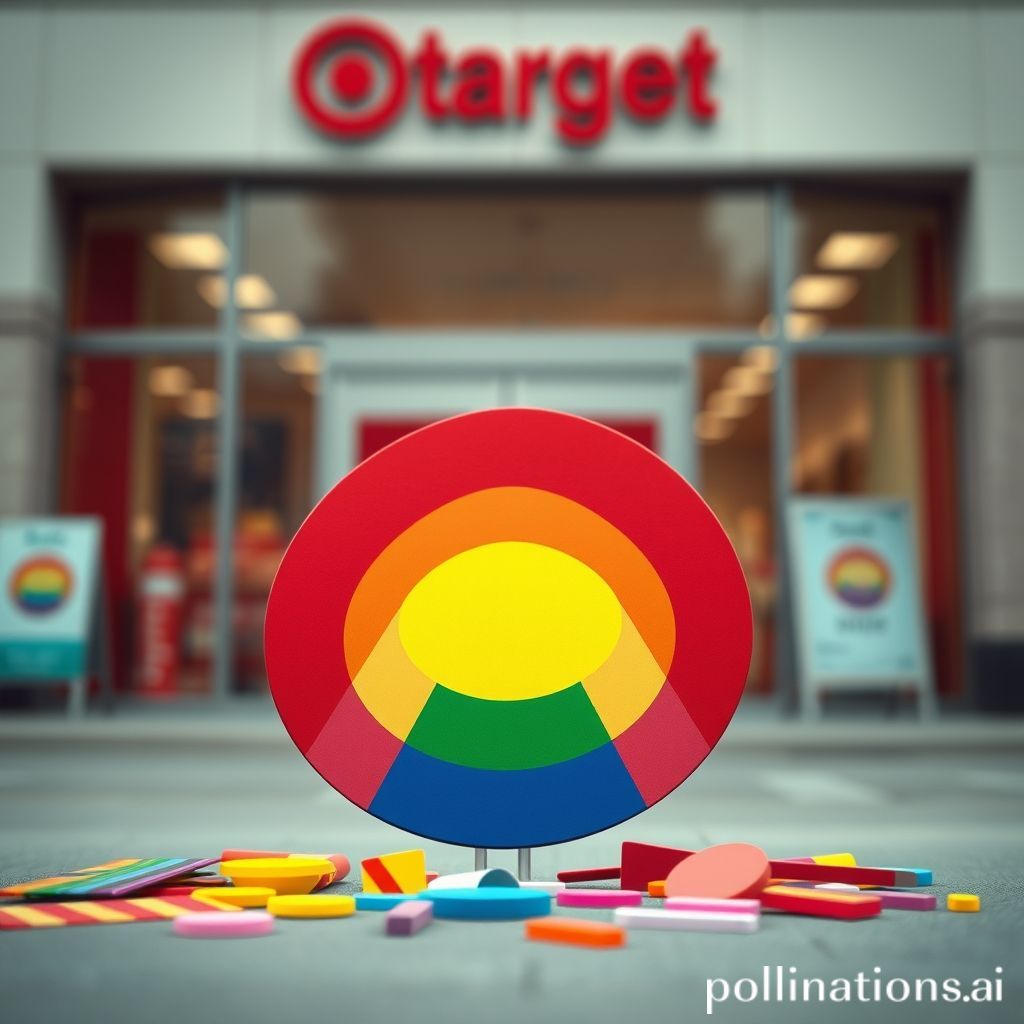Okay, let’s talk about something that’s been swirling around the design world lately: Target’s Pride collection. Now, I’m all for celebrating Pride, but when I saw this year’s designs, I couldn’t help but wonder, “How did this get approved?” I’m not alone. Creative Bloq just published an article pointing out the same thing. Honestly, it feels like the creative team took a nap and then slapped some rainbows on a t-shirt five minutes before the deadline.
We’re not talking nuanced design or anything remotely innovative here. It’s the visual equivalent of saying “Happy Pride!” in Comic Sans. And in a world where consumers, especially Gen Z and Millennials, are demanding more authenticity and purpose from brands, that’s a problem. In fact, according to a 2023 study by McKinsey, 66% of consumers value authenticity when choosing brands. This kind of perceived inauthenticity can actually backfire.
The issue isn’t just about aesthetics. It’s about representation and respect. The LGBTQ+ community isn’t a monolith, and their stories are far more complex than a simple rainbow graphic. When brands release lazy, uninspired Pride collections, it feels like they’re just trying to cash in on the celebration without actually understanding or supporting the community. According to a recent GLAAD study, 80% of non-LGBTQ adults agree that companies who support LGBTQ equality are more appealing. So, it’s not just the right thing to do, it’s good business… when it’s done right.
Look, I get it. Designing for a mass market is tough. But there are countless examples of brands that have nailed Pride collections, incorporating meaningful symbolism, collaborating with LGBTQ+ artists, and donating proceeds to relevant organizations. Why can’t Target step up their game?
Maybe they need a reminder that good design matters. A study by the Design Management Institute found that design-led companies outperform their competitors by as much as 219% over a 10-year period. Clearly, investing in quality design isn’t just about making things look pretty; it’s about building a stronger brand and connecting with your audience on a deeper level.
The real risk here is alienating the very community you’re trying to support. When people perceive your efforts as performative allyship, you lose credibility. And in today’s market, credibility is everything.
5 Key Takeaways:
- Authenticity Matters: Consumers, especially younger generations, are looking for brands that genuinely align with their values.
- Lazy Design Signals Inauthenticity: A poorly designed Pride collection can send the message that you’re just trying to profit from the LGBTQ+ community.
- Representation is Key: The LGBTQ+ community is diverse, and your designs should reflect that.
- Good Design is Good Business: Investing in quality design can boost your brand’s performance and build stronger customer relationships.
- Perceptive Allyship is Damaging: When your allyship is viewd as performative, you risk losing credibility and alienating the community you’re trying to support
FAQ: Target’s Pride Collection & Design Fails
1. What is the main criticism of Target’s Pride collection this year?
The main criticism is that the designs are lazy, uninspired, and lack authenticity, suggesting a lack of genuine support for the LGBTQ+ community.
2. Why is authenticity important for Pride collections?
Consumers, especially Gen Z and Millennials, demand authenticity from brands. A lack of authenticity can be perceived as performative allyship, which can damage a brand’s reputation.
3. How can brands create more authentic Pride collections?
Brands can create more authentic collections by incorporating meaningful symbolism, collaborating with LGBTQ+ artists, and donating proceeds to relevant organizations.
4. What are the risks of releasing a poorly designed Pride collection?
The risks include alienating the LGBTQ+ community, damaging brand credibility, and being perceived as exploitative.
5. What does the Design Management Institute study show about design and business performance?
The study found that design-led companies outperform their competitors by as much as 219% over a 10-year period.
6. What percentage of consumers value authenticity when choosing brands?
According to a 2023 McKinsey study, 66% of consumers value authenticity when choosing brands.
7. What are some alternative approaches Target could have taken?
Target could have partnered with LGBTQ+ designers, created more diverse and inclusive designs, and supported LGBTQ+ organizations through donations or sponsorships.
8. What is performative allyship?
Performative allyship is when a brand or individual expresses support for a cause without taking meaningful action or demonstrating genuine understanding.
9. How does good design contribute to a brand’s success?
Good design can build stronger customer relationships, improve brand perception, and ultimately boost business performance.
10. Where can I find examples of brands that have created successful and authentic Pride collections?
You can find examples by researching brands that have collaborated with LGBTQ+ artists, donated proceeds to relevant organizations, and incorporated meaningful symbolism into their designs. Consider researching smaller, independent LGBTQ+ owned businesses.

